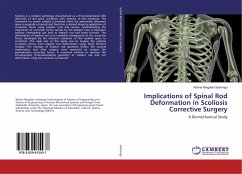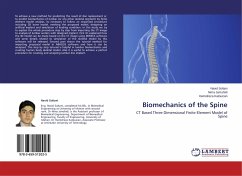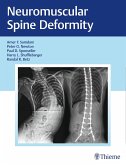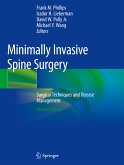Scoliosis is a complex pathology characterized as a three-dimensional (3D) deformity of the spine combined with rotation of the vertebrae. The treatment for severe scoliosis is achieved when the abnormally deformed spine is surgically corrected and fixed into a desired shape by application of corrective forces using implant rods and screws. Understanding the magnitude of corrective forces carried by the implant rods is important because overloading can lead to implant rod and bone fracture. The deformation of implant rod is an inevitable consequence of the corrective forces developed by the inherent resistance of the scoliotic spine to correction. The main aim of this study was to analyze the scoliosis corrective forces from implant rod deformation using Finite Element Analysis. The changes of implant rod geometry before the surgical implantation and after surgery were measured to analyze the postoperative corrective forces. A numerical method to measure the intraoperative three-dimensional geometry of implant rod and rod deformation using two cameras is proposed.
Bitte wählen Sie Ihr Anliegen aus.
Rechnungen
Retourenschein anfordern
Bestellstatus
Storno








